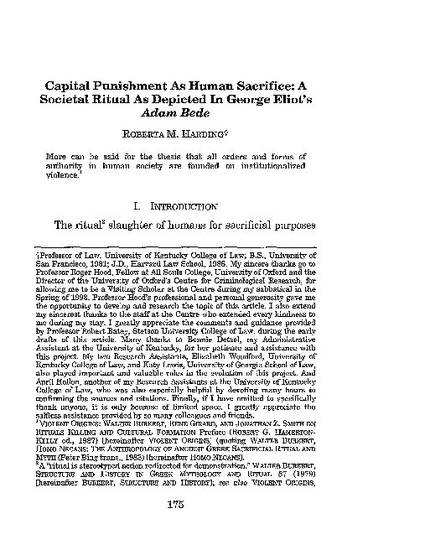
Article
Capital Punishment as Human Sacrifice: A Societal Ritual as Depicted in George Eliot's Adam Bede
Buffalo Law Review
Abstract
The purpose of this article is to identify, describe, and analyze the historic and contemporary connection between the practices of capital punishment and human sacrifice. After describing how human sacrifice constitutes an integral component of capital punishment, it will be argued that the institutionalization of this antiquated barbaric ritual, vis-a-vis the use of capital punishment, renders the present use of the death penalty in the United States incompatible with "the evolving standards of decency that mark the progress of a maturing society"; and that consequently, this facet of capital punishment renders the penalty at odds with the Eighth Amendment's prohibition against the infliction of "cruel and unusual" punishments.
Document Type
Article
Publication Date
1-1-2000
Disciplines
Citation Information
Roberta M. Harding, Capital Punishment as Human Sacrifice: A Societal Ritual as Depicted in George Eliot's Adam Bede, 48 Buff. L. Rev. 175 (2000).

Buffalo Law Review, Vol. 48, No. 1 (Winter 2000), pp. 175-297